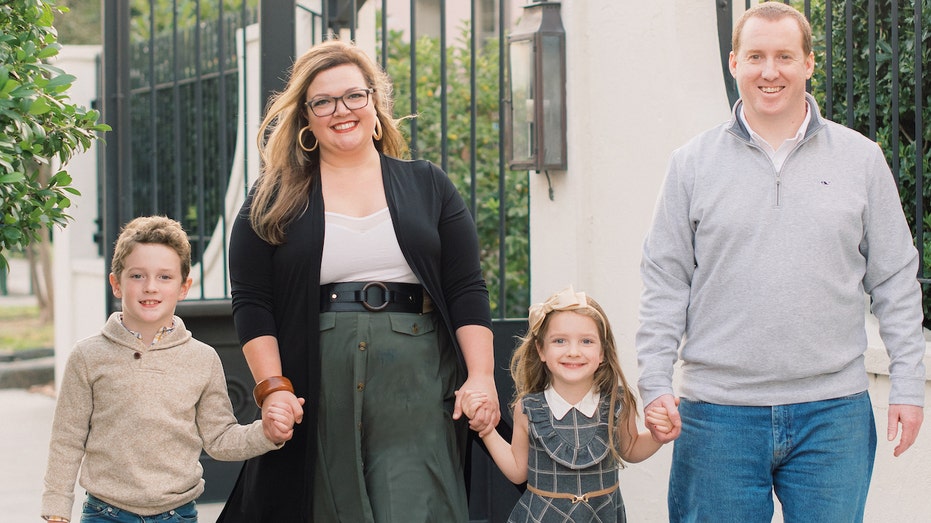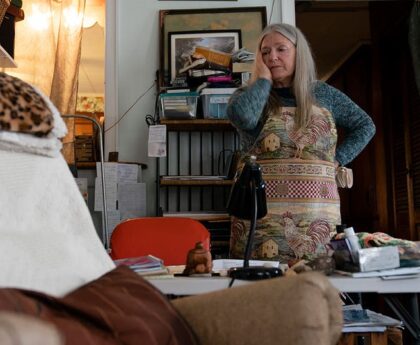For many people, ADHD (attention-deficit/hyperactivity disorder) calls to mind overactive kids who have trouble focusing or behaving. Yet the disorder also affects adults, many of whom are getting diagnosed well into their 30s, 40s and beyond.
A recent study from Epic Research, a health analytics firm based in Verona, Wisconsin, found that the share of females between ages 23 and 49 diagnosed with the disorder nearly doubled from 2020 to 2022.
Some doctors believe that many of these women may have assumed they had stress, anxiety or depression, as the conditions all have many overlapping symptoms.
One of those is Marie Ohlsson Chisholm, a 42-year-old small business owner in New Orleans, Louisiana.
ADHD NUMBERS CLIMBING DRAMATICALLY IN THE U.S., ESPECIALLY AMONG WOMEN, SAYS NEW STUDY
When her 7-year-old son was diagnosed with ADHD two years ago, she began researching the disorder and realized all of the signs and symptoms applied to her, too.
At 40 years old, Chisholm got her own diagnosis — and she said it felt like a new beginning.
“I was floundering — and now I am flourishing,” she told Fox News Digital in an interview.
Chisholm said she’d always been an “overachiever” during childhood and high school — but when she entered her college years and adulthood, she felt like she’d lost her sense of self-worth and confidence.
As an adult, she struggled to focus on tasks, found herself in a constant state of procrastination and felt unproductive and unfulfilled.
“Now I know it’s because I was in a state of executive dysfunction,” she said.
Often seen in those with ADHD, executive dysfunction is “a symptom that happens with conditions that disrupt the brain’s ability to control thoughts, emotions and behavior,” per the Cleveland Clinic.
FITNESS BLOGGER CELEBRATES 3 YEARS WITHOUT ADDERALL AFTER DRUG ‘RUINED’ HER LIFE
Common signs of executive dysfunction are trouble focusing on or finishing tasks, problems with impulse control, lack of motivation and inability to pay attention.
“I would just sit and worry about things instead of doing them,” Chisholm said. “It felt kind of like decision paralysis.”
Despite her inability to take action, Chisholm still felt fidgety and restless, craving constant stimulation.
She said this led her to snack when she wasn’t hungry, drink too much alcohol and constantly scroll through social media, which left her feeling depressed and anxious without being able to identify the root cause.
After several rounds of therapy and extensive research, Chisholm was finally able to put a name to her struggle.
She learned that an ADHD brain functions differently than a non-ADHD brain.
In an ADHD brain, there are lower levels of dopamine, the neurotransmitter that helps with regulating emotions and delivering feelings of pleasure and reward, according to Healthline. This compels people with ADHD to seek more ways to increase their dopamine levels, which can lead to inattention and hyperactivity.
People with ADHD also have trouble toggling between the two different “networks” of the brain.
The default mode network is active when someone isn’t focused on a particular task — it’s used for daydreaming, introspective thinking and creativity, per Psychology Today.
Then there is the task-positive network, which is engaged when someone is focused on a particular task, like completing a work project, paying bills or planning meals for the week.
SOUTH CAROLINA-BASED MOTHER OF THREE UNPACKS ‘MOM GUILT,’ REVEALS WHY IT OCCURS
In people with ADHD, the two networks are activated at the same time, making it difficult for them to focus.
“I was stuck in the default mode network for so many years,” said Chisholm. “Because of that, I wasn’t fully engaged in life the way I wanted to be.”
Chisholm’s doctor prescribed Adderall, a stimulant that helps people with ADHD to focus, stay organized and regulate their emotions and behavior.
She said the medication was like putting on glasses for her mind.
“Before treatment, it felt like every morning, when trying to get my brain started, the engine just kept turning and turning but never caught,” Chisholm explained. “The medication helps kick my brain into gear.”
She noted that while the medicine is a great tool, it’s not a magic solution on its own. Education and awareness are also essential. Now that she’s aware of how her brain works, she consciously changes her thoughts and behavior to accommodate it.
“I’ve been able to build structure and routine in my household — and have basically redefined who I am as a parent, wife, friend and businesswoman,” she told Fox News Digital.
In addition to becoming mentally and emotionally healthier, Chisholm has seen her physical health improve. Since her diagnosis, she’s focused more on nutrition and exercise.
“I’ve lost 30 pounds of weight and 39 years of shame,” she said. “I no longer eat healthy foods and exercise just to look better, I do it to feel better — to stay focused on my purpose and my dreams.”
Studies have shown that males are more likely to be diagnosed with ADHD than females. The gap starts in childhood; some 13% of boys are diagnosed versus 6% of girls, said the CDC.
Dr. Guenevere Rosenthal, a staff psychiatrist at Hackensack Meridian Health in New Jersey, believes women get diagnosed later in life for a variety of reasons, mainly because their symptoms are more subtle.
SEASONAL AFFECTIVE DISORDER SYMPTOMS, CAUSES AND WHEN TO SEEK HELP FOR MOOD DISORDER
“Women lean toward the inattentive-type symptoms, while men present with more overt, impulsive-type symptoms, which are a lot easier to notice at home or in school,” she told Fox News Digital.
“Because research has been more focused on boys and men, often health care providers and teachers do not look for the symptoms, which leads to a delayed diagnosis.”
As research has shifted and more women are getting diagnosed later in life, Dr. Rosenthal said their symptoms more commonly continue through adulthood in comparison to men.
For Chisholm, the ADHD symptoms would often emerge while she was juggling the numerous day-to-day duties and obligations of motherhood.
“So many moms and women my age are overwhelmed with what they should be doing and what they see other people doing,” she said. “I was always the room mom and the Girl Scout leader, and always seemed like I had it all together — but at home, I was full of anxiety and perfectionism.”
Genetics play a big part in someone’s likelihood of developing ADHD.
Between one-third to one-half of parents who have ADHD will have a child with the disorder; if an older sibling is diagnosed, the other children in the family will have more than a 30% chance of developing it, according to WebMD.
Chisholm said her father, son, brother and all of her nephews have ADHD — and she was the first female in her family to be diagnosed.
Environmental factors can also trigger the disorder, said Dr. Rosenthal.
“There is a lot of evidence, although still ongoing, showing that ‘addictive use’ of technology correlates with the development of ADHD,” she told Fox News Digital. “This link has been more notable with females.”
When “a person is using a tablet or phone for hours upon hours, scrolling through short clips and receiving instant gratification, it would increase the risk of not being able to focus for long periods of time and becoming easily distracted,” she went on.
Chisholm has made it a mission to raise awareness of ADHD among adult women. She offered some tips for turning the diagnosis into an opportunity for self-improvement and fulfillment.
First, she stressed the importance of learning about how the ADHD brain works.
“Reflect on your life. Think about the last time you felt like your most authentic, happiest self, then determine the reasons you felt that way,” she said.
“Then, start taking intentional steps to gradually make your daily life more like that again, one day or hour at a time.”
Chisholm also tries to keep her environment tidy and organized. “This is a constant battle for me, but I have made cleaning for at least 20 minutes a part of my daily exercise regimen,” she said. “When I’m done, my house and my mind are less cluttered.”
Finally, she said it’s important for women to give themselves space, mentally and physically.
“Make time every day to do something by yourself that energizes you, even if it’s just for 10 minutes,” she recommended. “Make a space in your home that is just yours, even if it’s just one corner of one room.”
For Chisholm, that space is her “creative studio,” which was formerly her children’s playroom. She transformed it into an inspiring environment where she and the kids can draw, paint, make jewelry and create pottery.
“When you have ADHD, it’s important to do things that fuel your interest and light up your brain,” she said.
Additionally, Chisholm said having a support system is essential.
“ADHD can be a blessing or a curse depending on your support system,” she pointed out. “The same qualities that make people with ADHD extra-special when they are in healthy, supportive environments can lead to depression, addiction, anxiety and destructive habits when they are in toxic or unstable environments.”
Today, Chisholm said that while she still sometimes struggles, her quality of life has vastly improved.
“My self-confidence has skyrocketed,” she said. “Now that I know how my brain works, I believe I can accomplish anything I set my mind to doing.”
CLICK HERE TO SIGN UP FOR OUR HEALTH NEWSLETTER
Her sense of empathy has grown significantly, she said.
“As a result, I am a better mother, wife and friend,” Chisholm said. “I value my time — and other people’s time — more. Understanding myself has allowed me to acknowledge my worth.”
Chisholm compares her diagnosis to finding a missing puzzle piece.
“I can finally see the full picture of who I am as a person,” she said.
Article Source: Health From Fox News Read More



